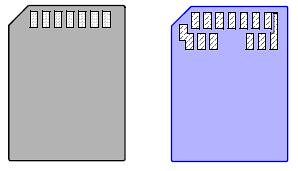Somebody was interested in a procurement system that exploits the Internet to reach business partners in a cost-effective and timely manner. So off I went to sourceforge and searched for procurement. I have been a regular visitor of SF.net so most of the entries look familiar … except … for … TenderSystem!
According to its author …
TenderSystem is an Internet based electronic tendering system to source, award and manage the total procurement process.
This tried and tested technology leverages the age-old principle of supply and demand, through reverse auction, ensuring that products are purchased at the best possible price, at a lower administration and management cost, than any other method.
You can run the demo here.
Or you can build your own site. I decided to do both.
I installed the application on my Windows XP desktop successfully but with a lot of side-installs and much tweaking. Since this is a web-based application, one has to install other support apps to deploy it. All in all, I installed four different packages, namely: Apache 2.054, PHP 5.1.2, MySQL 5.0.18 (server and client), and TenderSystem Beta 0.8
PHP Installation Download the zip package from PHP.net. Do not use the installer package as this does not include the PHP extensions required by TenderSystem. Modify PHP.INI to activate the following directives:
short_open_tag = On
extension_dir = “/php/ext”
extension=php_curl.dll
extension=php_mysql.dll
extension=php_xsl.dll
Modify your Windows PATH to include the PHP installation directory (c:\php) otherwise the dlls included with the PHP package will not be available to Windows and the extensions will not be loaded.
Apache Installation Download apache2.054 from apache.org and install the package. To activate php support, modify the configuration file (httpd.conf) to contain the following directives:
# Allows Apache to serve these files if a directory was invoked.
DirectoryIndex index.html index.html.var index.php
# Load PHP as a module
LoadModule php5_module “C:/php/php5apache2.dll”
PHPIniDir “C:/php”
# Add-type entries
AddType application/x-httpd-php .php
AddType application/x-httpd-php-source .phps
TenderSystem Installation Download the package and extract it under apache’s htdocs directory.
If you don’t set (or can’t, since you don’t control your server) short_open_tag on, you’ll be greeted with a code dump when you open your browser to http://localhost/tendersystem. A little sleuthing uncovered three (so far) php scripts which use the PHP short tags:
modules/generic/generic.php
modules/install/generic.php
application/include/modules/generic/class/xml.class
Take a test drive and give me your comments.



